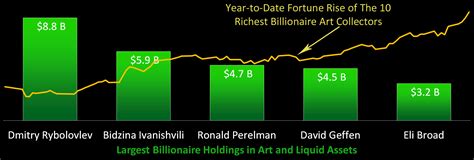
Introduction
Art collecting has been a long-standing tradition among the wealthy and elite, with individuals going to great lengths to build their collections. From oil tycoons to tech moguls, art collectors come from various backgrounds and industries, each with their unique approach to acquiring and appreciating artwork. In this blog post, we will delve into the world of art collecting and explore the motivations and stories behind some of the biggest art collectors in the world today.
J. Paul Getty: The Art Collecting Addict
J. Paul Getty, the oil tycoon known for his frugality in personal matters, paradoxically spent millions on artwork and the construction of the Getty Museum. Despite his quirks, Getty considered himself an “incurable art collecting addict,” highlighting the deep-seated passion that drives art collectors to acquire and preserve works of art.
The Motivation Behind Art Collecting
Art collecting goes beyond mere acquisition; it is a way for individuals to express themselves, connect with others, and shape their understanding of the world. By collecting art, individuals not only showcase their tastes but also engage in a dialogue with artists, history, and society, reflecting their values and interests.
Art Collecting Across Industries
Art collecting is not limited to traditional art patrons like royalty and nobles. From tech giants to luxury goods CEOs, individuals from diverse industries have built impressive art collections over the years. Their collections not only showcase their wealth but also reflect their personal interests and connections to the art world.
The Intersection of Business and Art
For many elite art collectors, art is not just a passion but also a lucrative investment. Business tycoons like Roman Abramovich and Bernard Arnault have used their financial resources to build extensive art collections, blending their entrepreneurial spirit with a love for the arts.
The Legacy of Art Collectors
Art collectors like Eli and Edith Broad have gone beyond personal enjoyment to establish museums and foundations that make art accessible to the public. Their philanthropic efforts aim to preserve art for future generations and foster a greater appreciation for creativity and culture.
Related Questions
1. What drives individuals to become avid art collectors?
Art collectors are often driven by a deep passion for art, a desire to connect with artists and history, and a means to express their personal values and interests.
2. How do art collectors from different industries approach building their collections?
Art collectors from diverse industries bring their unique perspectives and resources to the world of art collecting, using their business acumen to acquire and appreciate artwork.
3. What role does art collecting play in preserving cultural heritage and shaping history?
Art collecting not only preserves valuable artworks but also influences how history is taught and shared, shaping narratives and contributing to a broader cultural dialogue.
4. How do art collectors balance the financial aspect of collecting with their personal passion for art?
While art collecting can be a significant investment, many collectors prioritize their love for art over financial gains, focusing on acquiring pieces that hold personal meaning and significance.
5. What impact do philanthropic art collectors have on the art world and society at large?
Philanthropic art collectors like Eli and Edith Broad use their collections to enrich public access to art, supporting museums and initiatives that promote cultural education and appreciation.